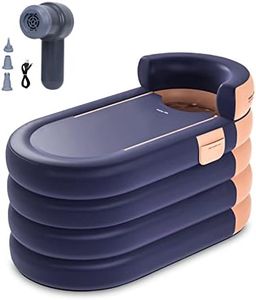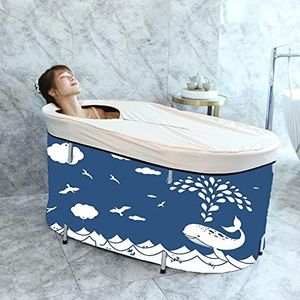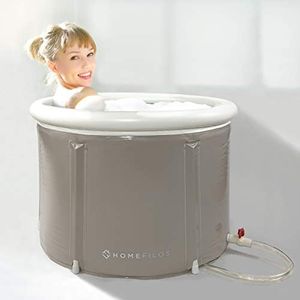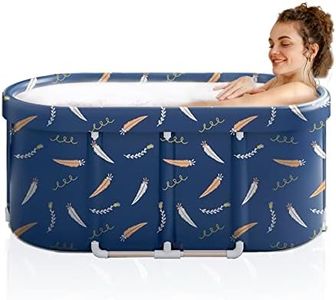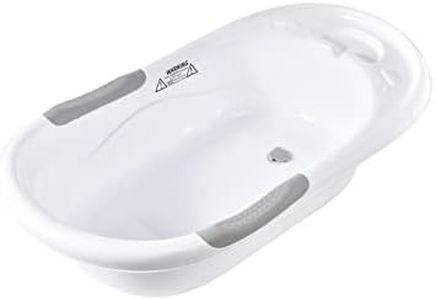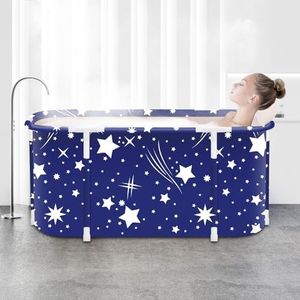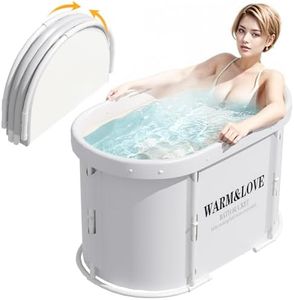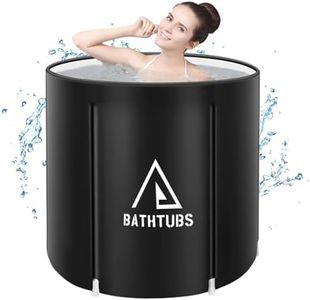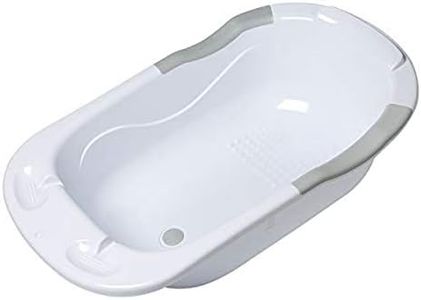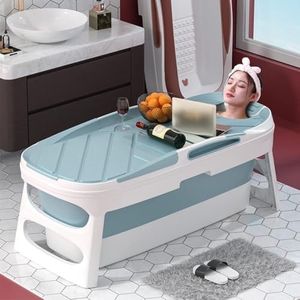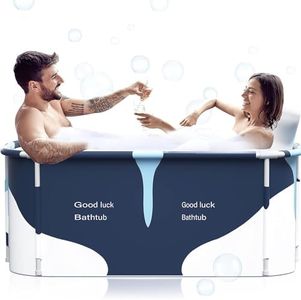We Use CookiesWe use cookies to enhance the security, performance,
functionality and for analytical and promotional activities. By continuing to browse this site you
are agreeing to our privacy policy
10 Best Freestanding Soaking Tubs
From leading brands and best sellers available on the web.Buying Guide for the Best Freestanding Soaking Tubs
Choosing a freestanding soaking tub can transform your bathroom into a luxurious retreat, but it’s important to focus on features that will make it comfortable, practical, and a good fit for your space and lifestyle. When shopping, consider not just the aesthetic appeal but also how the tub suits your bathing habits, space, and long-term comfort. Understanding the key features can help you narrow your options and make a choice that brings lasting satisfaction.MaterialThe material of a soaking tub is very important as it impacts comfort, durability, weight, heat retention, and maintenance. Common materials include acrylic, cast iron, stone resin, and solid surface. Acrylic is light, warm to the touch, and easy to clean, making it ideal if you want something low-maintenance. Cast iron retains heat well and is extremely durable, but it is very heavy and might require floor reinforcement. Stone resin and solid surface tubs offer excellent heat retention and a premium look, but also tend to be quite heavy and can be more expensive. Consider your bathroom’s flooring, how much weight it can handle, and what matters most to you—such as warmth, appearance, or ease of cleaning.
Size and DimensionsSize includes the length, width, depth, and overall footprint of the tub, and it directly affects comfort and fitting within your bathroom. Shorter tubs (about 55-60 inches) are ideal for smaller bathrooms, while longer ones (over 70 inches) are best if you have more space or want to stretch out fully. Depth matters, too: a deeper tub provides a more immersive soak (look for depths of 18 inches or more), but it might be harder to get in and out, especially if mobility is a concern. When choosing, measure your bathroom first and consider who will use the tub and how much room you want for soaking.
Soaking DepthSoaking depth refers to the amount of water that a tub will hold while you’re inside—essential for deep, relaxing baths. Tubs with greater soaking depth allow more of your body to be submerged, but they also require more water to fill, and might take longer to heat. Shallower tubs are better for quick soaks or for those who need easier access. Consider how deep you want the water to be when you bathe and balance it with your home’s water heater and your comfort getting in and out.
Installation and Plumbing RequirementsFreestanding tubs are generally easier to install than built-in options, but you’ll still need to pay attention to plumbing location (floor or wall-mounted faucets and drains) and the tub’s weight, especially for upper floors. Check if your existing plumbing matches the tub’s drain placement. Think about ease of access for cleaning and how the tub’s placement will impact movement in your bathroom. Picking a tub that aligns with your current plumbing setup can simplify installation and help avoid extra costs.
Shape and ErgonomicsFreestanding tubs come in a variety of shapes—oval, rectangular, slipper, and more. Shape isn’t just an aesthetic choice: it affects how comfortable the tub is while you soak. Slipper tubs have a higher back, offering support if you enjoy reclining, while oval shapes tend to be more universal in comfort but may take up more space. Consider your height, how you like to sit or recline, and try to test tub shapes in person if possible. The best shape for you is one that lets you relax comfortably for as long as you like.
WeightThe weight of the tub matters not only for installation but also for the safety of your bathroom’s flooring, especially if you’re on an upper story. Lightweight tubs (like acrylic) are easier to move and install, whereas cast iron and stone tubs can be very heavy and may require reinforcing your floor. Before you buy, make sure to check your floor’s supporting capacity and think about how easily the tub can be delivered and positioned in your home.
